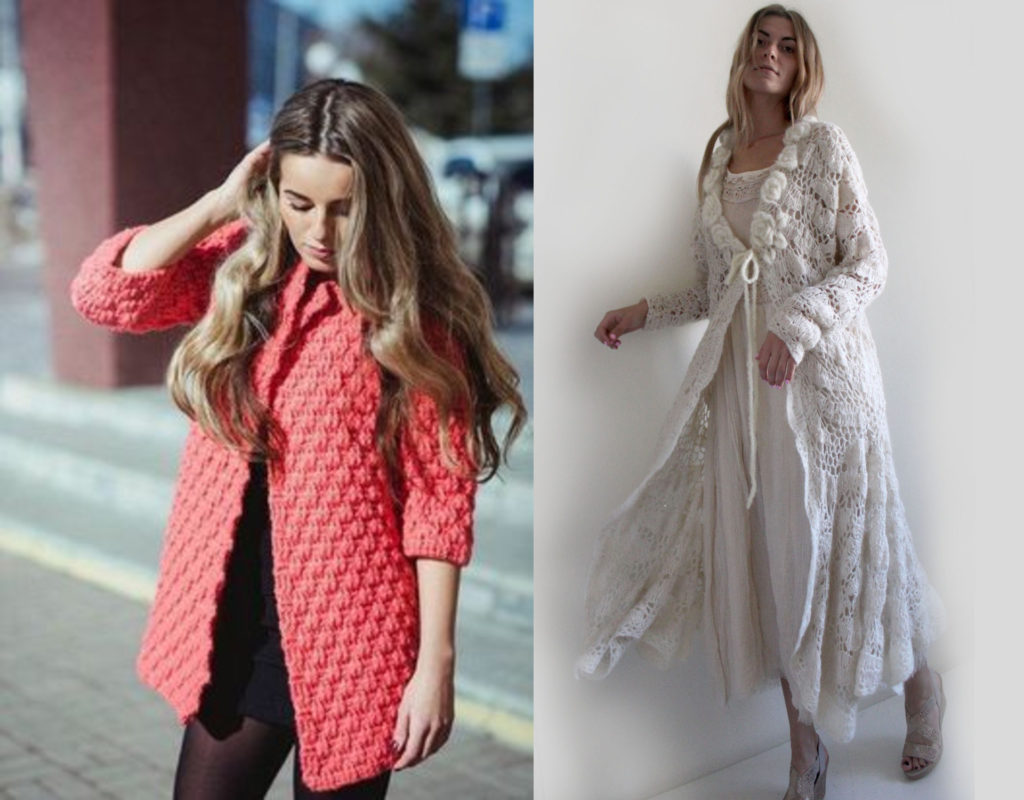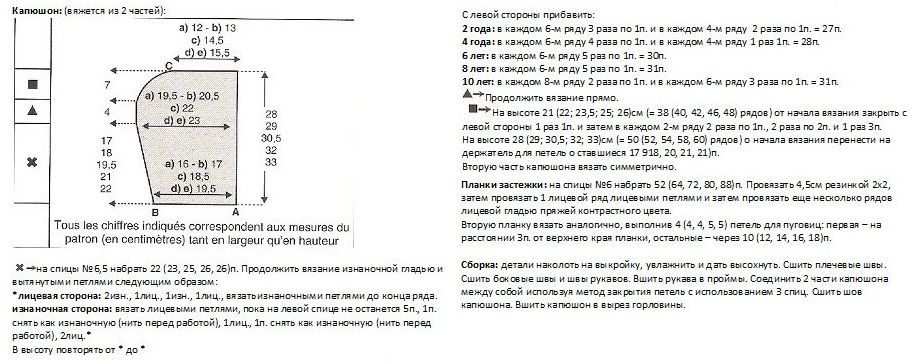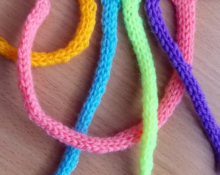 Many needlewomen easily take on work on sweaters, hats, mittens or vests. At the same time, knitting enthusiasts are wary of working on such large-scale projects as adult outerwear. Of course, there are a lot of products with complex patterns and patterns, and the creation of such things can take quite a long time, discouraging the desire to do needlework for a long time.
Many needlewomen easily take on work on sweaters, hats, mittens or vests. At the same time, knitting enthusiasts are wary of working on such large-scale projects as adult outerwear. Of course, there are a lot of products with complex patterns and patterns, and the creation of such things can take quite a long time, discouraging the desire to do needlework for a long time.
Nevertheless, we suggest you seriously think about knitting a coat with your own hands, because such a thing is guaranteed to make you stand out from the crowd of ladies in jackets and drape items. Moreover, When creating this item of clothing, you have the opportunity to choose everything exclusively according to your preferences: from the color of the yarn and its composition to the shape and style of buttons, snaps or zippers.
DIY knitted coats for women and girls
By style, modern women's coats can be divided into several types:
- Classic. This outerwear is quite strict in style, knitted in calm colors and without expressive patterns.
- With patterns. Such coats can be decorated with braids, arans, plaits and similar elements. The yarn is selected either plain or melange. Also, products with patterns include knitting various parts of the product with multi-colored threads.
- A coat with a loose silhouette or an oversized coat. Such things usually suggest that they were given to you to wear, and the owner has more impressive dimensions. These models have quite a lot of fans, and they are recommended for use by slender ladies.
- Length max. With these coats, the more length the better. Such things suit girls and women who are taller and slimmer.

If you are still afraid to take on such a grandiose task right away, we recommend trying your hand at knitting a children's coat. Of course, this will be relevant for those who have a little princess surrounded by them. Like all children's things, it will not take very much time to work, but the result will pleasantly surprise you, the little fashionista and those around you.
Advice! The most amazing thing is that almost any model for adults can be converted to children's size. To do this, you just need to adjust the pattern according to children's standards and perhaps make some adjustments to the pattern.

Knitting needles or crochet hook: how to knit a coat
If we are usually accustomed to thinking that Crochet more suitable for light summer clothes, or small accessories, then, for example, in the case of a coat, not everything is so simple. Certainly, crocheted items made from cotton yarn will still look quite airy in the warm season, but with this tool you can achieve fairly tight knitting. Such a coat will be relatively stiff and will not be too form-fitting.

Crochet coat
If you want to knit something softer, more reminiscent of a long sweater, most likely you should pay attention to a tool such as knitting needles. Often, thicker yarn and, accordingly, larger diameter knitting needles are used for knitting outerwear.

Knitted coats
Attention! The thicker the yarn and knitting needles, the fewer skeins you will need to bring your idea to life. Accordingly, a thicker thread with the same composition will help save some money.
Knitting a coat for a woman
A knitted coat will add comfort and softness to your look, and will also help correct some features of a particular figure. In the new fashion season, for example, poncho-style coats are quite relevant, which, like nothing else, can visually remove a few extra pounds. And for those with an average figure, there is room to roam in an impressive list of models and their designs.
Selection of model, materials and tools
In this article we will look at a wonderful coat model that can be knitted with or without a collar. To work on an oversized cardigan coat, you can choose threads of any color, as well as one of the patterns given in the description. We have tried to prepare options for every taste, so you just have to follow the progress of knitting and patterning the details of the product. And the result will depend only on the choice you make.

Oversized cardigan coat options
To work on a product size S (44) you will need:
- 12 skeins of wool blend yarn with composition 25/75 – wool/acrylic, weight/meter – 100g/100m;
- straight or circular (depending on your preference) knitting needles number 6.
Knitting process
The above coat model uses the “Putanka” pattern. You can see how to achieve this effect and some other options in Diagram 1.

Pattern 1 – Various knitting patterns
Back
- We cast on 66 stitches, then, knitting every 6 stitches, add one loop symmetrically on both sides up to 74 stitches.
- It is necessary to knit 63 cm to the armhole, then close it symmetrically in 4 stitches.
- After this we knit 25 cm. Leave the central 22 stitches on the knitting needles. for the collar, closing 22 stitches on the shoulders. left and right.
Shelves
From two different skeins we knit two parts at once on the same knitting needles.
- We dial 46p. per piece, after knitting 6p. add 2*1p. from the outside (it turns out 48p.).
- We knit to the armhole 63 cm, closing 4 stitches.
- After this we knit another 12 cm, close 26 stitches. on the collar side, 22 stitches remain.
- We knit another 13 cm, close the stitch and sew the shoulder seams.
Sleeves
- Knitted from top to bottom. From the edge loops (KP) at the shoulder we pick up 5 stitches, then from the shoulder seam - 1 stitch, on the other shoulder side - 5 stitches. We knit 1 p., at the end we add 1 p from the armhole. We continue to knit shoulder rows in this way until all the loops from the armhole are transferred to the knitting needles.
- We knit the added CP with a purl loop on the front side, and with a knit stitch on the reverse side. Next we knit, decreasing a total of 30 stitches.
- When there is a distance of 5-6 cm left to the expected end of the sleeve, change the knitting needles to thinner ones. We knit 5–6 cm, then return to needles No. 6 and knit the same distance for the lapel. Close the sleeve loops.
Collar
In this model this part is optional.
On the collar side (closed 26 stitches) from the front panel we make an indent of 10 stitches, on circular knitting needles we sequentially cast on the loops of the front, back and second shelf from the front side. We knit the loops straight to form a collar of the length you need.
Assembly
Sew the back, front and sleeves with one seam. The smell will be about 20 cm. Sew buttons or buttons.

Women's coat pattern
We knit a coat for a girl
For little fashionistas, there are a great variety of different coat models available that you can knit with your own hands. Let's introduce you to quite a restrained option both in color and design, which still looks stylish and impressive and can be recreated by craftswomen without much experience in knitting.

Selection of model, materials and tools
Let us present in the description the sizes for different ages: 2-4-6-8-10 years.
For knitting we will need:
- Yarn with a composition of 55% acrylic, 25% polyamide, 20% mohair - 8-9-11-13-15 skeins.
- Straight knitting needles number 6 and 6.5.
- Additional spoke.
- 4-4-4-5-5 buttons with a diameter of 28 mm.
Patterns used in knitting: elastic band in 2*2 format, purl stitch, fantasy pattern and braid from patterns 2 and 3, as well as a relief pattern according to the following pattern - 2p. purl stitch + 4p. facial.
Knitting density on 6.5 knitting needles:
– purl stitch: 10 cm*10 cm = 13p.*18p.;
– fantasy pattern: 18 cm*10 cm = 26p.*18p.;
– relief pattern: 10 cm*10 cm = 13p.*18p.
Knitting process
Next, in diagrams and pictures with a description, we will indicate the progress of work and the features of this particular model of knitted coat for girls of different ages.
- For knitting backrests you should be guided by the pattern and description from diagram 2.

Scheme 2 – Backs of coats for girls
- To knit left and right for a child's coat shelf, you need to follow the instructions in diagram 3.

Diagram 3 - Children's coat shelves
- Knitting sleeves according to the scheme number 4 below.

Pattern 4 – Knitting sleeves
- And finally for knitting hood We will use the description from diagram 5.

Pattern 5 – Knitting a hood
Also, the last diagram provides a description of how to knit fastener strips and assemble the finished product.


 0
0





